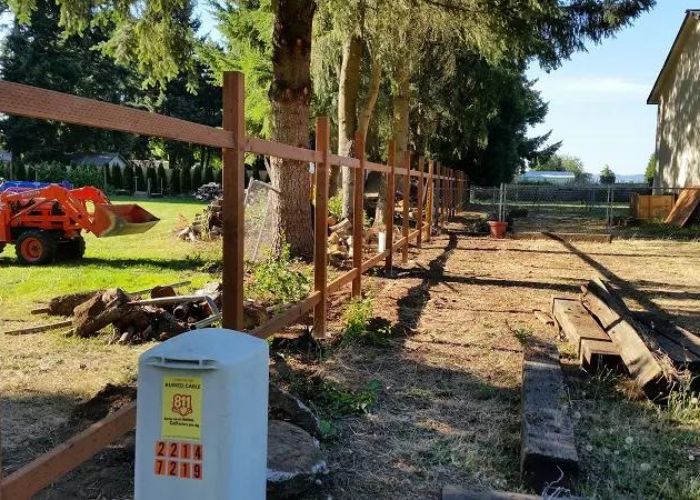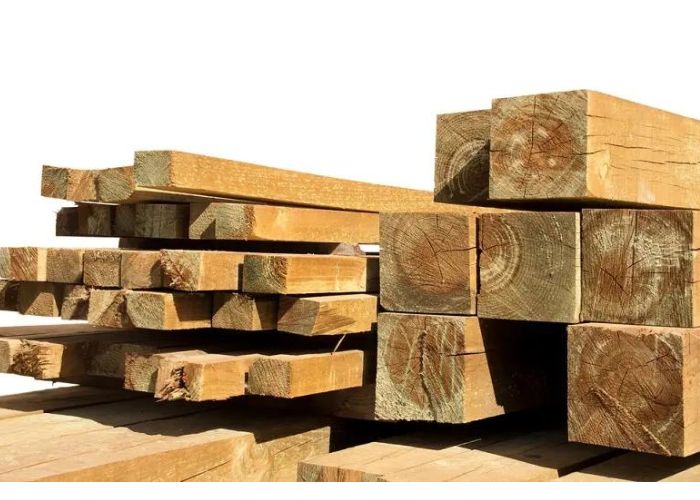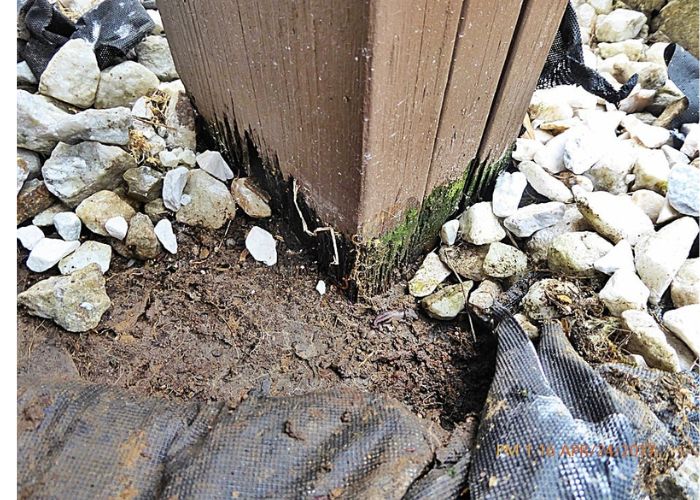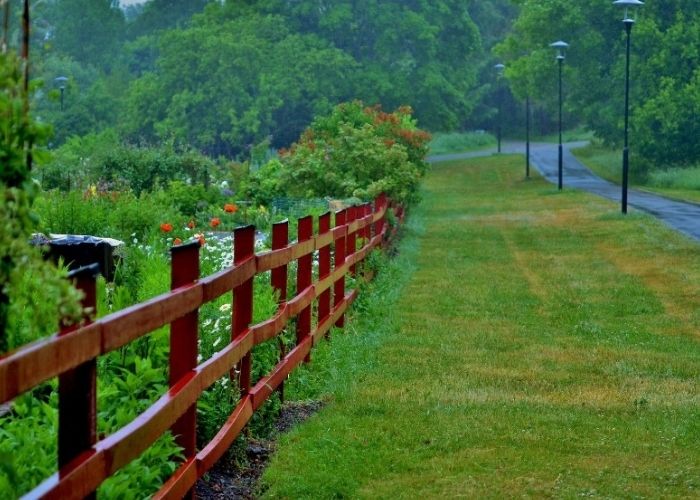Pressure-treated wood may be partially protected yet still susceptible to damage by water and moisture. That is why it is in your best interest to learn how to protect pressure-treated wood underground.
Even though pressure-treated wood has better survival chances than untreated wood, you can further lengthen its life span. More so if you plan to use them for projects that require underground support.
If you’re wondering how to do it, read to the end of this post to find out the detailed methods of preventing the wood from rotting in the ground, along with other valuable information.
Here it goes.
How To Protect Pressure Treated Wood Underground
The easiest way to protect your treated wood underground is to seal pressure-treated wood with an all-weather wood sealer. This, of which, you can apply one coat of the sealer with a pump garden sprayer. Allow about two hours for the first layer to dry and soak into the wood grain. Then, apply the second coat with a paintbrush.
How Do You Protect Your Pressure Treated Wood Underground?

A block of pressure-treated wood is the final product of untreated wood placed in a pressurized vacuum tank that draws out moisture from the wood grains and replaces it with chemical preservatives.
These preservative agents protect the wood against rot, insects, and fungal growth. This however doesn’t make pressure-treated wood waterproof.
While these wood types are rot and termite-proof, treated lumbers can still waste away due to exposure to water underground. That’s why there’s a need to protect your pressure-treated wood further underground.
Below are sample ways to protect pressure-treated wood buried in the ground: seal the wood or separate it from contact with soil.
Seal The Wood
Allow Enough Time for The Wood To Fully Dry
Freshly pressure-treated wood is usually called “wet” because the water-borne chemical preservatives infused into the lumber grain haven’t had enough time to dry.
Therefore, before applying a sealer for pressure-treated wood deck, allow it to dry thoroughly for a few weeks or a month. Generally, the more time you can allow it to dry, the better.
Note that applying wood sealer stain too soon will peel off as the wood continues to dry.
Apply Wood Sealer To the pressure treated lumber Before You Bury It

Once the wood is sufficiently dry, wash it with clean water to eliminate debris on the wood surface. Then, again, let that moisture dry out completely.
Pressure-treated wood is safe against rot and insects that tend to burrow and eat away the wood. However, you need to apply an all-weather sealant to protect against water damage and other environmental threats.
But, if you are in a rush for whatever reason or you’re in a high humidity region and the wood seems to be taking forever to dry, you can use Thompson’s WaterSeal Waterproofing Stain. It’s a unique wood sealer that can be applied to damp wood.
However, if this Thompson Waterseal sealant doesn’t dry up as expected, see our guide on “Why Thompson Water Seal Does Not Dry and What to Do” and learn a few ways of speeding up the drying time.
Next, choose a preferred finish for your pressure-treated wood to apply when your wood dries. You get to choose from a wide selection of water-based and oil-based sealers or stains. You can also choose a clear, transparent, semi-transparent, and solid wood sealer.
Apply a wood sealer to the dry lumber using a sprayer or paintbrush. Always ensure you seal the entire wooden post, including the top.
Then allow it sufficient time to completely dry as recommended by the manufacturer. After this, your pressure-treated lumber is ready for the ground.
Separate The Wood From The Soil
Another way of protecting wood underground is by separating it from direct contact with soil.
The soil in the ground always has a certain amount of water and moisture. If the pressure-treated wood remains in direct contact with this wet soil, the water and moisture will eventually soak into the wood and destroy it.
The following methods are some of the tried-and-tested ways to separate pressure-treated wood from the soil.
Enclose The Wood In Concrete
Enclosing pressure treated wood in concrete is one of the best ways to separate the treated wood from direct contact with the ground. Mix your batch of concrete and pour it into the hole with the wooden post.
This can serve as a great base foundation and a means of preserving wood from moisture transfer underground.
Can wood stain be used on concrete? To find out, read further.
Surround The Wood In Gravel
Another brilliant way to prevent the wood from contact with water and moisture underground is to use gravel. This implies putting thick layers of stones, pebbles, rocks, or gravel in the hole that you’ll put your treated lumber.
Line the inside of the hole with enough gravel to guarantee that the lumber post doesn’t have direct contact with soil.
Although the gravel seal isn’t as impenetrable as concrete, the spaces in the gravel allow water to drain down. This reduces the water and moisture transfer that would otherwise be trapped and seeping into the wood.
See also: Will bleach halt wood rot?
Wrap It With Plastic
This is another method you can explore to protect pressure-treated wood underground. Wrap it tightly in a thick plastic wrapper (carpenter’s plastic) before you bury it. The idea is to secure the wood with soil like you would with concrete.
The downside to using this method is that it’s not a “permanent” fix. With age and exposure to water and moisture underground, the plastic wrap will wear and tear. As a result, the once protected lumber post will be exposed to damage by water and moist ground.
Your best bet? Use concrete or water sealer for better results. Or even both because why not?
What Causes Pressure Treated Wood To Rot?

Water and moisture are the greatest enemies of wood, including the pressure-treated ones. With prolonged exposure to water, the wood will soak up water and moisture over time.
Consequently, the wood expand and contract, warp, and rot and eventually lose its integrity in a few years.
How Long Will Pressure Treated Wood Last Underground With No Further Treatment?
Multiple studies have concluded that pressure-treated wood can last up to a good 40 years without rotting or being damaged by insects. However, this life length excluded the presence of water and moisture underground.
Without additional treatment, pressure-treated lumber buried in the ground can last up to 7-10 years before the effects of constant contact with water begin to show.
The Types of Wood Suitable for Use as Fence Posts
Use Black Locust or White Cedar if you’re in a swampy area and fungi are a threat to your wooden fence posts. Also, Cypress or Redwood is naturally moisture resistant.
Another great option is the Yellow Pine since it’s easy to treat. You can also find pressure-treated wood labeled as UC 4A or UC 4B: they are excellent for underground use because of their natural resistance against moisture.
Always choose the highest grade of wood possible.
Here is a guide that provides essential insights on how to tell if wood is treated.
What Chemicals are used in Pressure Treated Wood?
Chemicals commonly used as wood preservatives are Chromated Copper Arsenate (CCA) and Alkaline Copper Quaternary (ACQ).
Copper is responsible for decay resistance, bacterial and fungal growth on lumber. The arsenic compound is toxic and helps to keep away termites, marine borers, and any other wood-boring insects. The chromium binds the other chemicals together in the wood.
ACQ is a less toxic preservative because of the absence of chromium and arsenic. Copper remains responsible for repelling decay, while Quaternary Ammonium shields the wood against insects and termites.
There’re several other wood preservative chemicals. They may not be famous like the ones mentioned above, but they are all approved by the United States Environmental Protection Agency (EPA)to treat wood.
Safety Precautions When Using Pressure Treated Wood
- Always wear your eye protection and a respirator or mask when cutting or drilling into pressure-treated wood.
- Do not use pressure-treated wood for items or surfaces that are likely to come into contact with food. Better yet, avoid treated wood for indoor use.
- Dispose of sawdust from pressure-treated wood and scrap wood by bringing them to a landfill for disposal.
- Don’t burn pressure treated wood stakes because they can release toxic chemicals into the air, which, if inhaled, can cause respiratory problems and even death.
FAQs
Does pressure treated wood need to be sealed?
Yes. Pressure-treated wood is protected from rotting, termites, and fungi. However, water and extreme climatic conditions can still damage the wood. Therefore, it’s essential to apply a wood sealer for extra protection and longevity of the exterior wood.
Besides, sealing cut ends of pressure treated wood is important because it helps prevent moisture from penetrating the exposed areas, which can lead to rot, decay, and structural damage.
How long will a pressure treated 4×4 post last in the ground?
Generally, if your pressure-treated 4×4 wooden posts are set in concrete or have a stone base, you can have them in good shape for up to 25 years. However, if the post underground is in constant contact with water and moist ground, it might not last more than seven years.
What is the best sealant for pressure treated wood?
Go for Ready Seal 520 Exterior Stain and Sealer if you’re looking for a professional quality wood sealer with various wood shades finish to choose from. This liquid wood sealant is also goof-proof, easy to apply, and can be used on pressure-treated lumber underground and above ground.
How do you keep wood from rotting in the ground?
The ideal way to protect the wood from rotting in the ground is to apply wood preservatives free of arsenic and chromium. An example of this preservative is the water-borne copper naphthenate. Then, brush it on the wood before putting it in the ground: whether pressure-treated or not.
Will pressure treated wood rot in the ground?
A block of pressure-treated wood can stay rot-free for up to 40 years. However, constant contact with water will eventually cause the pressure-treated lumber to rot in the ground.
See also: What causes pressure-treated wood to rot
How do you seal treated wood for ground contact?
First, choose a wood sealant that’s suited for ground contact. Next, soak part of your treated wood that will go into the ground in a wood sealer for about 20 minutes. Then let it dry. Finish by painting a thick layer of the wood sealer to the part previously soaked. Allow it to dry thoroughly before ground contact.
Can pressure treated wood be buried in dirt?
Yes. Pressure-treated wood can be buried in the dirt when used as a fence post or any exterior structure that requires underground support. However, it needs the most protection because continuous exposure to moisture in the dirt might cause the wood to rot and waste away prematurely. Remember, pressure treatment doesn’t protect the wood from water damage.
How long does pressure treated wood last?
Pressure-treated wood can last up to 40 years without any sign of decay. However, factors that determine this lifespan come down to the type of wood, the climatic conditions, how the treated wood is used, and the extra maintenance practices.
Best below ground wood preservative
You should always choose a wood preservative containing copper naphthenate for wood that will be buried underground. Look out for a brand that meets the American Wood Protection Association (AWPA) standards for preserving wood for ground contact. An excellent example in this category is the Rust-Oleum Woodlife CopperCoat.
Next read: Can you use untreated wood outside?
Conclusion
Having learned how to protect pressure-treated wood underground, you are better placed to ensure your wood lasts longer than most.
What stands out the most about this topic is, we’re seeking to protect pressure-treated wood from constant contact with water.
To achieve it, we can seal the wood with a wood sealant or cement the wood underground. But, of course, we could also do both, right? When we know better, we do better. So, engage us in the comments below with other ways of preventing pressure-treated wood from rotting.
If your wood is not pressure treated learn How to prevent wood from rotting in the ground. The methods would work perfectly for any type of wood.


I would recommend never using concrete to set your posts if you live on clay/silt as I did one side of our yard with posts set in concrete ( the neighbor said he would pay for half only if I concreted the posts in) and the pressure treated post rotted off in about 10 years. On 2 other sides of the yard I put some gravel in the bottom of the hole and they have lasted more than 30 years. Just treated as they were from from the hardware store, no extra treatment. I am sure different types of soil will yield different outcomes.
Hi Mr David,
After years I think I have finally found the person who can solve my challenge.
I have a small deck 10×10 sitting on dirt at townhouse complex. I’m an artist and painted Starry Night on the new deck after waiting over a year for the drying and curing time. I used SW deck paint. In one year the paint started bubbling up. (I have many pics if needed.) Year three peeling up like crazy. The wood on side cuts has green moss algae.
I want Starry Night back and will need a new deck.
Questions:
1. What wood do I use?
2. What do I do to surface below this ground deck?
3. Do I increase gaps between boards since ‘garden trash’ gets stuck and may cause holding moisture between gaps?
4. I’m thinking of sealing 3 sides and then paint Starry Night with some kind of water based opaque paint that allows me the colors I need. What products?
5. Or is there a different way I can achieve my goal?
6. Open to suggests from an expert!
What exactly did you use to paint with? Did you clean the deck before you painted it? Did you allow the deck to dry for two days minimum after cleaning? What were the humidity levels? Was it done in direct sunlight?
I’ve been using Sherwin Williams products for 35+ years without problems. I’ve also never heard of paint doing this without some other type of interference or human error.
Did you clean and sand the boards before using the S-W paint?